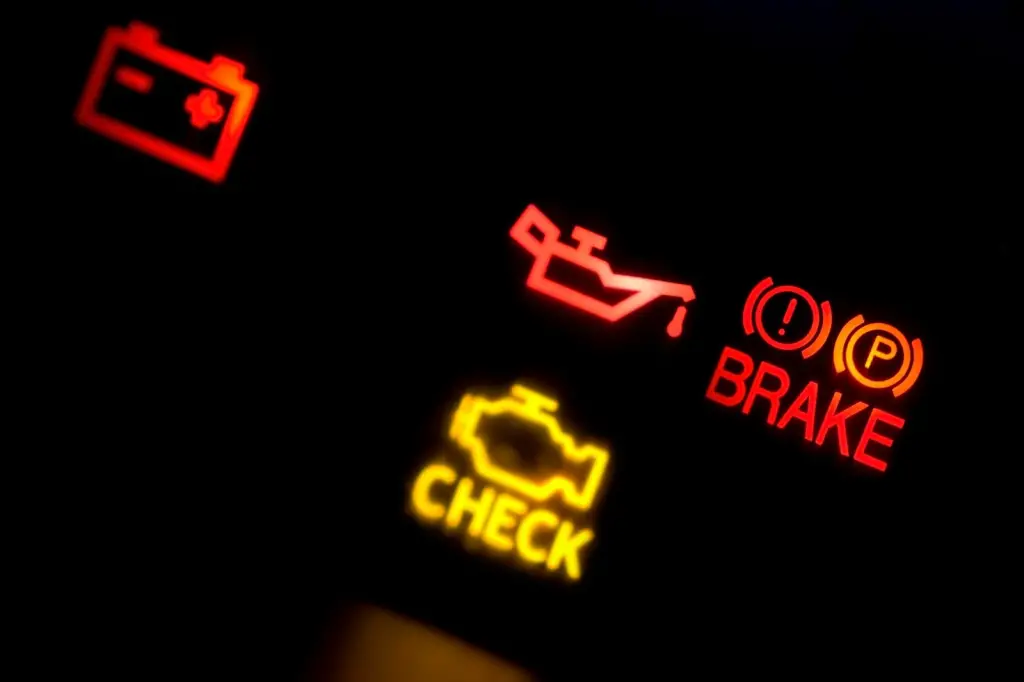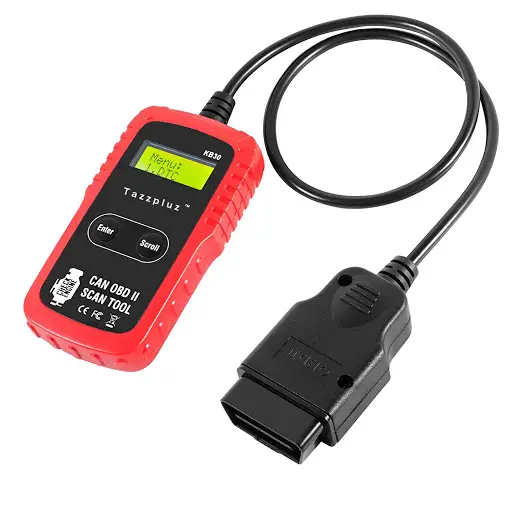Your vehicle’s check engine light can highlight a range of different issues. These issues can range from some minor fixes to severe problems. And one of these problems is an EVAP leak that can send you into a frenzy to check out what the problem is because you don’t have any experience with it.
Modern vehicles come with internal computers that can alert you if the internal system of your vehicle has some issues. They do so by generating trouble codes. If your vehicle has detected a problem of leaks in its EVAP and you need assistance, then you need to find out the code meaning.
But even if you have the trouble code at your hand, you might wonder what the heck is an EVAP leak and how to get it fixed. Well, it’s time to clear out your mind because this article will help you in sorting things out with your evaporative emission system leak.
Check Engine Light
As we have mentioned above, your check engine light can tell you all sorts of things associated with your vehicle. Whenever there is an internal issue in your vehicle whether it is a minor fix or a serious failure, the check engine light will come on. So it is your starting point, and if there is no check engine light, then your car is working fine.
But here’s a thing! This check engine light illuminates when there is something wrong in your car, and it is not limited to any leakages in your EVAP. you might have to look for more information on it just to be sure. Therefore, instead of speculating, it is better for you to have an OBD reader and scan tool that will tell you exactly what is wrong with your vehicle. And of course, it can also tell about the level of leakage in your EVAP.

Check engine light has all kinds of different codes for different errors, and with the scanning tool in your hand, you can conveniently sort out the problem and look for the solution instead of wasting time in speculations. Therefore, invest in a decent quality OBD scanner first. It will be helpful for you in the future. With experience you will get better at using it and interpreting the information will become easier.

What’s an Evaporative Emission Control System?
The EVAP in your vehicle is geared towards containing any vapors or fumes from the gasoline. It ensures to prevent any spillage out into the environment. So pollution control is the primary purpose that an EVAP serves.
However, it also keeps all those dangerous fumes away from entering into your vehicle’s interior from your fuel tank. Apart from that, the emissions control system is designed to keep combustible fuel in control and prevent it from causing any problem in your vehicle’s system. It is also designed to keep the fuel odor from the combustion process and the fuel from entering your vehicle.
An EVAP leak is a kind of fault in the emission control system and its function. The most common reason for this leakage is if the gas cap is not in its place properly. It initiates the check engine light, but there can be several other reasons for this as well besides the gas cap. And we will explore the most common ones in the text below.
Causes of an EVAP leak
When you see that check engine light illuminating on the dash in most cases, you will ignore it. This is because there are several reasons that can make this light turn on. In most cases, drivers don’t have time to get the problem sorted out by immediately paying a visit to the service shop.
Now the problem here is that the check engine light can turn on for nothing or it can be a vital sign of warning as well. The only way to be sure here is to run an emission control system diagnosis on your vehicle.
Now, there are two options: you can either go to your mechanic or an auto parts store for a service or hook your own diagnostic trouble device to your car. By doing so, you can immediately find out what is causing the problem as the tool will generate trouble code for the problem. And we will talk about some of them in a bit!
With an EVAP leak, your vehicle will fail its emissions test as it is impacting the atmosphere. And it’s not just about the atmosphere; it’s your own personal health as well. At times, the fuel cap is the reason why your vehicle has increased emissions. You can tighten the cap, and the whole emissions problem will be resolved. But there are times when there is a much bigger problem than just a loose cap part replacement.
Symptoms of an Evaporative Emissions System Leak

Before you start scanning and running diagnostics on your car, you can notice a few signs. These signs will tell you that the check engine light is going on due to EVAP leak and there is no other problem on the cards.
The most common of all the symptoms is a smell of gasoline which is the most obvious one. There are so many parts, and each of these parts needs to be assessed carefully for proper rectification. A single part can be contributing to a major problem, and there might be a quick fix for it. But there are some others as well,
- You are facing problems in starting your engine.
- Engine faces a rough idling.
- Your car is showing bad fuel efficiency.
- There is a deterioration in the overall engine performance.
With experience, you will learn to identify these issues more conveniently. But some engines don’t even illuminate the check engine light, or you may not notice any of the above-listed symptoms either.
So there is only one way to be sure, and that is to run a check on your vehicle. You can also use a charcoal canister or go for a low budget smoke machine for this purpose. With this smoke machine, you can run smoke through the line to see where the smoke comes out and assess which of the components are faulty.
Here’s a brief video to show you the ropes!
Common EVAP Leak Codes
For those vehicles that do show some symptoms after diagnostics and also trigger the check engine light, you can run a check and see what error code is the cause of the problem. Based on the OBD II system of your vehicle, there are different codes that might crop up. The OBD II system varies from one vehicle to another depending upon the model and make.
- Code P0440 – EVAP System.
- Code P0441 – EVAP system incorrect purge valve or flow.
- Code P0442 – EVAP System small leak detected.
- Code P0446 – EVAP System vent valve solenoid control system.
- Code P0455 – EVAP System leak detected (large).

There are various other codes, and they range from P0440 to P0457. They indicate different part issues in your vehicle. There are some conditions where more than one code shows up after diagnostics. For instance, your purge valve and vent valve are not working. You will have to replace the purge valve and the solenoid to get all codes clear out.
If the OBD II scanner gave back more than one of these codes, then it is not going to be an easy fix. You need more insight to find out whether the problem really needs your attention or not.
How to Fix a Leak in the Evaporative Emission Control System?
As there are different codes and there might be a simple problem that you can fix pretty easily, or it might be the other way around.
Easy Fixes
The most common of all causes is that your vehicle’s check engine light is on and it shows on trouble code is because its gas cap is not securely in place. Modern cars are more environmentally friendly. Their internal EVAP system is designed to warn you as soon as there are gasoline fumes and fuel vapors leaking out into the environment from your fuel tank. You can also smell gasoline even when your car is idle.
It’s a good sign that your car is helping you in pollution control and adhering to emissions policies. But it can be a serious pain in the neck when drivers find out they have to go through all the trouble to find out that their gas cap was loose.

But no frowning, you might have to pay a hefty bill for the fix. A better way to approach this matter is to make sure that your gas cap fits properly and is completely locked when you went to the filling station. Also, keep a close eye on your fuel efficiency.
Any leak will deteriorate efficiency. Tightening your fuel tank’s gas cap and clearing out the diagnostic trouble codes will get your problem resolved. But what if the check engine light keeps coming back on. There might be some serious issues that need fixing. But in most cases, the fuel tank gas cap is the issue.
Not So Easy fixes
Tightening the gas gap is not that difficult of a job, but not every fix is that simple. There might be a leak caused by some of the following matters that require some serious repair work. These include,
- Faulty or damaged o-ring seals.
- EVAP canister leakages.
- Gasoline tank leakage
- The leak detection pump is defective.
- Leaks in vacuum vent or vacuum pump or hoses.
- Leaks in other hoses or somewhere else in the system.
How Much Does it Cost to Repair an EVAP System Leak?
If you have been wondering how much it costs to fix Code P0456, then this section will find you an answer. Based on the trouble code that your vehicle has generated and what components are faulty or are damaged, a repair can cost you anywhere from a few dollars to well over $400.
For instance, a repair or replacing a gas cap can only cost around $20, but if you have to buy a new EVAP system charcoal canister, then it is certainly going to cost you a lot more than that. Gas tank and fuel canister repair and replacements in Ram vehicles can cost around $200 to $300. Repairing hoses also costs, especially if the problem is with the hoses in the fuel system.
Professional service costs much more than an independent mechanic service. In some cases, it is much more cost-effective to repair and rebuild the entire engine with the help of a mechanic instead of scanning for vulnerabilities and leaks. Here’s a video for guidance.
Final Words
Fuel system leak can be another issue. And repairing the fuel system of your car can also cost you a lot based on the damage. Troubleshooting EVAP system codes can be simple or a tough job if there is a gas cap issue then it is pretty simple, and it doesn’t cost you much either. But if you are done with the gas cap and the issue is still there then you need to prepare yourself for a hefty bill.

